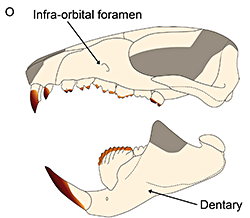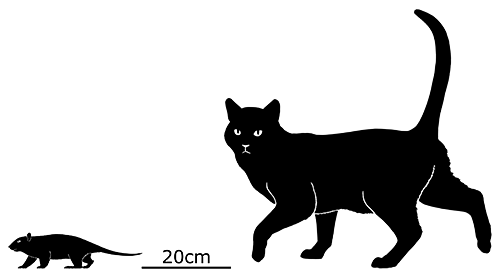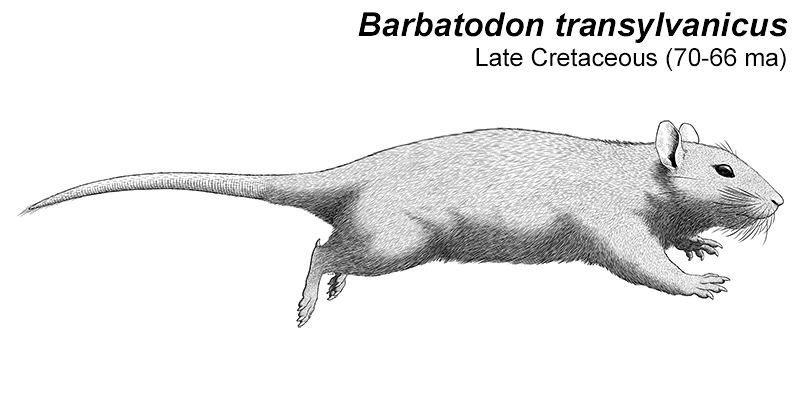Barbatodon
Living during the Late Cretaceous of Romania (70-66 mya), Barbatodon was part of a group of European multituberculates known as the kogaionids. These multis originated on the then-isolated Hațeg Island alongside dwarf dinosaurs and giant pterosaurs, and adapted to a highly insectivorous diet. They even managed to survive through the end-Cretaceous mass extinction, and spread across Europe for a further 10 million years before going extinct in the early Eocene about 56 million years ago.
Barbatodon is mainly known from teeth and partial skull material, so its full size is uncertain, but it was likely rat-sized at around 25-30cm long (10-12″). In one specimen its teeth were also preserved with their original coloration – a distinctive “blood red”. This feature is seen in some modern rodents and shrews, and is caused by iron minerals in the enamel that are thought to add extra strength. Since multis didn’t have ever-growing teeth like rodents, this added durability would have been especially important to them.
Another group of multis, the taeniolabidoids, also had red teeth, but since fossil enamel is rarely so well-preserved and unaltered we don’t know whether this was a shared ancestral feature or due to convergent evolution.



